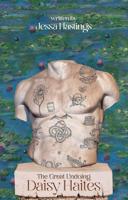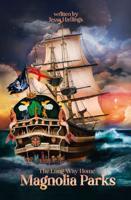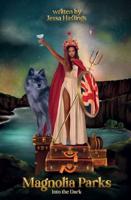Publisher's Synopsis
Ambrose Gwinnett Bierce (June 24, 1842 - circa 1914) was an American short story writer, journalist, poet, and Civil War veteran.Bierce's book The Devil's Dictionary was named as one of "The 100 Greatest Masterpieces of American Literature" by the American Revolution Bicentennial Administration. His story An Occurrence at Owl Creek Bridge has been described as "one of the most famous and frequently anthologized stories in American literature";and his book Tales of Soldiers and Civilians (also published as In the Midst of Life) was named by the Grolier Club as one of the 100 most influential American books printed before 1900. A prolific and versatile writer, Bierce was regarded as one of the most influential journalists in the United States, and as a pioneering writer of realist fiction. For his horror writing, Michael Dirda ranked him alongside Edgar Allan Poe and H.P. Lovecraft. His war stories influenced Stephen Crane, Ernest Hemingway, and others, and he was considered an influential and feared literary critic. In recent decades Bierce has gained wider respect as a fabulist and for his poetry.In December 1913, Bierce traveled to Chihuahua, Mexico, to gain first-hand experience of the Mexican Revolution. He disappeared, and was rumored to be traveling with rebel troops. He was never seen again. Early life: Bierce was born in a log cabin at Horse Cave Creek in Meigs County, Ohio, on June 24, 1842, to Marcus Aurelius Bierce (1799-1876) and Laura Sherwood Bierce. He was of entirely English ancestry, all of which came to North America between 1620 and 1640 as part of the Great Puritan Migration. He often wrote critically of both "Puritan values" and people who "made a fuss" about genealogy. He was the tenth of thirteen children, whose father gave all names beginning with the letter "A": in order of birth, the Bierce siblings were Abigail, Amelia, Ann, Addison, Aurelius, Augustus, Almeda, Andrew, Albert, and Ambrose. His mother was a descendant of William Bradford.His parents were a poor but literary couple who instilled in him a deep love for books and writing.Bierce grew up in Kosciusko County, Indiana, attending high school at the county seat, Warsaw.He left home at 15 to become a printer's devil at a small abolitionist Ohio newspaper, the Northern Indiana. Military career: At the outset of the American Civil War, Bierce enlisted in the Union Army's 9th Indiana Infantry. He participated in the operations in Western Virginia (1861), was present at the Battle of Philippi (the first organized land action of the war), and received newspaper attention for his daring rescue, under fire, of a gravely wounded comrade at the Battle of Rich Mountain. In February 1862 he was commissioned a first lieutenant, and served on the staff of General William Babcock Hazen as a topographical engineer, making maps of likely battlefields. Bierce fought at the Battle of Shiloh (April 1862), a terrifying experience that became a source for several short stories and the memoir "What I Saw of Shiloh." As a staff officer, Bierce became known to leading generals such as George H. Thomas and Oliver O. Howard, both of whom supported his application for admission to West Point in May 1864. General Hazen believed Bierce would graduate from the military academy "with distinction" and William T. Sherman also endorsed the application for admission even though stating he had no personal acquaintance with Bierce.In June 1864, Bierce sustained a serious head wound at the Battle of Kennesaw Mountain, and spent the rest of the summer on furlough, returning to active duty in September. He was discharged from the army in January 1865.........






















